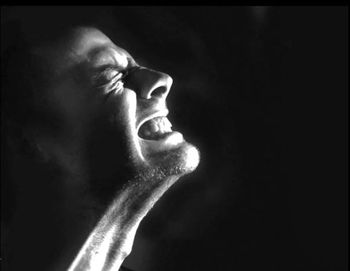
Statin-Related Myopathies: Identification and Management
Barriers to the use of statins-the most potent medicine currently available in the fight against atherosclerotic heart disease-are both real and perceived.
Barriers to the use of statins-the most potent medicine currently available in the fight against atherosclerotic heart disease-are both real and perceived.
Treatment-related adverse drug reactions (ADRs), such as myalgias, GI disturbances, headaches, and hepatotoxicity, are reported and intolerance to the drugs or the fear of ADRs all mediate against optimal prevention and management of coronary heart disease (CHD). Muscle symptoms, such as myalgias, myopathies, and rhabdomyolysis, have received the most attention from clinicians and patients alike since the removal of cerivastatin (Baycol) from the market in 2001.
These ADRs and potential management strategies will be reviewed here.
A Range of Symptoms
Muscle symptoms related to statin therapy may manifest along a spectrum that ranges from benign myalgias (pain or soreness with no creatine kinase [CK] level elevation) to myopathy (symptoms of myalgia with a CK level higher than 10 times the upper limit of normal [ULN]) to life-threatening rhabdomyolysis (CK level, higher than 10,000 IU/L, or CK level, more than 10 times ULN plus an elevation in serum creatinine level).1
Although the incidence of myopathy in randomized controlled trials ranges from about 1.5% to 5% and postmarketing surveillance reports also document low rates of myopathies, the incidence in clinical practice may actually be higher.2-4
Patients who report myopathies often describe the thighs, calves, or both as major sites of pain. Although the average time to onset of symptoms varies, the median time has been reported as 1 month, with a range up to 12 months.5 A retrospective evaluation identified a mean duration of therapy of 6 months before symptom onset.6
Patient-related factors that place patients at higher risk for muscle-related ADRs include advanced age, female sex, small body frame, and complex medical conditions.2
Common treatment-related risk factors are drug-drug interactions and high-dose statin therapy.2 Specific medications-such as fibrates (specifically, gemfibrozil), cyclosporine, macrolide antibiotics, protease inhibitors, amiodarone, and verapamil-are responsible for some of the most important drug-drug interactions with statins and increase the likelihood of a patient experiencing muscle-related ADRs.
These drugs generally should be avoided, if possible, or therapy switched to an agent less likely to interact with statin drugs. Fenofibrate, for example, would be an appropriate choice for a patient treated for mixed dyslipidemia.
Atorvasatin, simvastatin, and lovastatin are metabolized by CYP3A4 and so may place the patient at the greatest risk for dangerous drug interactions. The best options for LDL lowering in patients taking any of the agents mentioned above or for patients already on a multidrug regimen may be pravastatin, which is renally eliminated and not metabolized by the CYP system, and fluvastatin and rosuvastatin (primarily metabolized by CYP2C9).2Symptom Management
In most patients, muscle symptoms related to statin therapy resolve somewhat quickly on cessation of therapy.2 At first presentation of symptoms, obtaining CK levels and comparing these with baseline values, if available, is advisable.7
If the CK level is more than 10 times the ULN or higher than 10,000 IU/L, statin therapy should be discontinued immediately and the patient should be evaluated for possible rhabdomyolysis.
For patients with CK levels less than 10 times ULN, the CK level and symptoms may be monitored and, if tolerable, the patient may continue on therapy at the same or a reduced dosage.1,7
For patients with a CK level more than 10 times ULN, perhaps related to a comorbid condition but without symptoms, stopping statin therapy is recommended.7
If muscle symptoms are intolerable and the CK level is more than 10 times ULN, several management strategies might be considered. Note that monitoring should continue for an elevated CK level.
First, treatment with the statin should be discontinued until the patient is asymptomatic and then the patient may be rechallenged with the same or a different statin at the same or a reduced dosage.1,7 This strategy recently was verified in a retrospective cohort study that evaluated patients who discontinued statin therapy.8 In this study, among patients who were rechallenged with a statin after a statin-related event, 90% ultimately could tolerate the statin and continued to take the statin 12 months after the initial event.8
Rechallenging with the same or a lower dose of the same or a different statin can help identify patients who are experiencing a true ADR as well as maintain the treatment’s lipid-lowering and maximum cardiovascular benefit.
Some patients may benefit from a switch to a more potent statin, such as rosuvastatin, but at a lower dosage to achieve the same reduction of LDL.
If a drug interaction is the presumed cause of muscle pain, a switch to a statin not metabolized by CYP3A4 (ie, rosuvastatin) or eliminated via the renal system (ie, pravastatin), as mentioned above, is an option.
Alternatively, and especially if symptoms develop on rechallenge, therapy with the statin may be discontinued altogether and treatment may be switched to a nonstatin lipid-lowering medication (eg, fibrates or ezetimibe). These agents may be effective, but they do not lower LDL to the same extent as do statins and are not associated with the mortality benefit attributed to statin therapy.
In some patients, alternative dosing strategies, such as every-other-day or once-weekly dosing, may be considered to reduce the dosage. These strategies are discussed in a separate article.
Still a Mainstay of Treatment
Statins continue to be a mainstay in the treatment of patients with CHD and are known to also have multiple pleiotropic effects. Statin intolerance should be evaluated, monitored, and managed carefully to ensure that patients remain adherent to and derive maximum benefit from lipid-lowering therapy.
References
1. McKenney JM, Davidson MH, Jacobson TA, Guyton JR; National Lipid Association Statin Safety Assessment Task Force. Final conclusions and recommendations of the National Lipid Association Statin Safety Assessment Task Force. Am J Cardiol. 2006;97:89C-94C.
2. Joy TR, Hegele RA. Narrative review: statin-related myopathy. Ann Intern Med. 2009;150:858-868.
3. Bays H. Statin safety: an overview and assessment of the data-2005. Am J Cardiol. 2006;97:6C-26C.
4. Law M, Rudnicka AR. Statin safety: a systematic review. Am J Cardiol. 2006;97:52C-60C.
5. Bruckert E, Hayem G, Dejager S, et al. Mild to moderate muscular symptoms with high-dosage statin therapy in hyperlipidemic patients-the PRIMO study. Cardiovasc Drugs Ther. 2005;19:403-414.
6. Hansen KE, Hildebrand JP, Ferguson EE, Stein JH. Outcomes in 45 patients with statin-associated myopathy. Arch Intern Med. 2005;165:2671-2676.
7. Pasternak RC, Smith SC Jr, Bairey-Merz CN, et al; American College of Cardiology; American Heart Association; National Heart, Lung and Blood Institute. ACC/AHA/NHLBI clinical advisory on the use and safety of statins. J Am Coll Cardiol. 2002;40:567-572.
8. Zhang H, Plutzky J, Skentzos S, et al. Discontinuation of statins in routine care settings: a cohort study.
For additional reference:
• Go AS, Mozaffarian D, Roger VL, et al; American Heart Association Statistics Committee and Stroke Statistics Subcommittee. Heart disease and stroke statistics-2013 update: a report from the American Heart Association. Circulation. 2013;127:e6-e245. doi:10.1161/CIR.0b013e31828124ad. Epub 2012 Dec 12.
• Third Report of the National Cholesterol Education Program (NCEP) Expert Panel on Detection, Evaluation, and Treatment of High Blood Cholesterol in Adults (Adult Treatment Panel III) final report. Circulation. 2002;106:3143-3421.
• Grundy SM, Cleeman JI, Merz CN, et al. Implications of recent clinical trials for the National Cholesterol Education Program Adult Treatment Panel III guidelines. Circulation. 2004;110:227-239.
Newsletter
Enhance your clinical practice with the Patient Care newsletter, offering the latest evidence-based guidelines, diagnostic insights, and treatment strategies for primary care physicians.































































































































































































































































































































